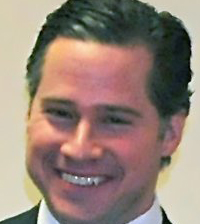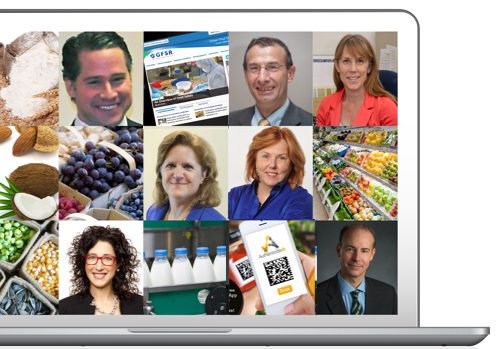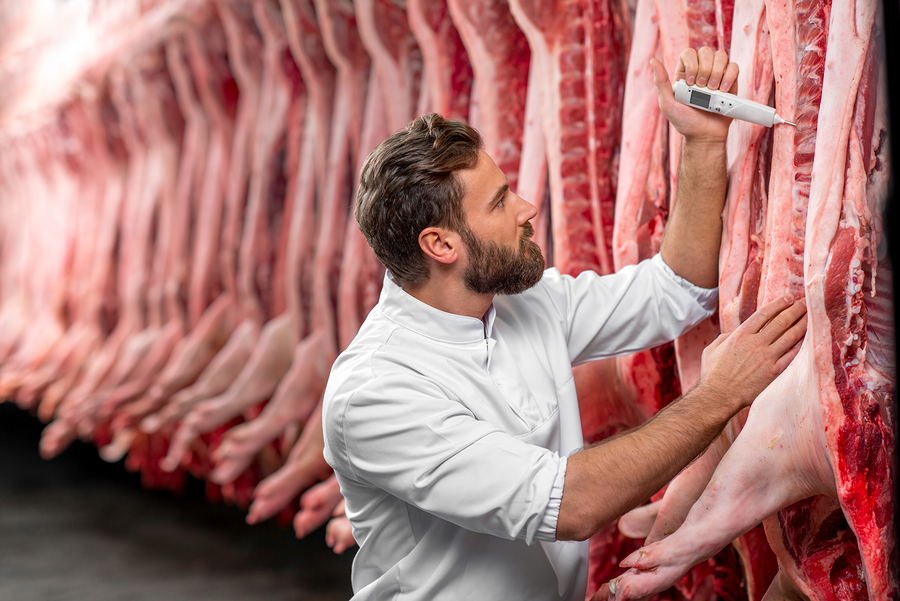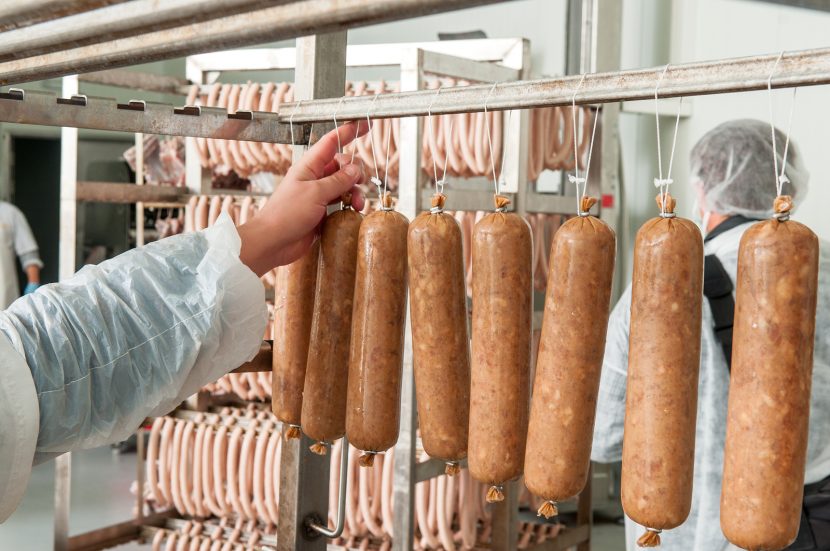Summary of Highlights from GFSR’s Panel Discussion on Food Fraud The Next Big Killer
By: GFSR Staff
There was a terrific turnout for Global Food Safety Resource’s (GFSR) first online video panel discussion in late August and we were delighted with our audience’s interest in “The Next Big Killer: Food Fraud—Protecting Your Brand Through Transparency.” Our panelists received so many questions that we couldn’t get to them all in the hour allocated for the discussion, so we know we broached a topic that is top-of-mind for many people in the industry. The discussion was co-sponsored by GFSR and Authenticateit, the global leader in helping companies protect their brand from counterfeiters using software that empowers brands to manage their brands and intellectual property Co-moderators were our own CEO, Tina Brillinger, and Dawn Van Dam, an innovative business leader and facilitator.
The discussion brought industry stakeholders and subject matter experts together to increase awareness of food fraud and provide strategies to mitigate the risk to your brand while improving consumer trust.
Our panelists included:
- Karen Mills Director, Quality Assurance (Canada) at Highliner foods
- Yves Rey, Corporate Quality General Manager at Groupe Danone
- John Spink, Director & Assistant Professor, Food Fraud Initiative, Michigan State University
- Mitchell Weinberg, CEO, INSCATECH
- Sara Zborovski, Partner, Norton Rose Fulbright
Want to watch a replay of the entire discussion? We’ve taken the liberty of summarizing the discussion for you, highlighting only the responses to questions that were asked. If you would like to view the discussion we’ve made the video available on our GFSR Youtube Channel. Click here to watch now!
 Karen Mills Director, Quality Assurance (Canada) at Highliner Foods
Karen Mills Director, Quality Assurance (Canada) at Highliner Foods
Food fraud is pervasive and we need to make sure that what we’re getting is as pure as possible. Dairy, juices, oil – it’s a bit of a war. Fraudsters are getting very ingenious about how to make funds from the product that they’re selling and this is definitely an issue.
I definitely think this is something consumers are concerned about and it’s especially an issue with seafood. Highliner is fortunate because we have a fairly robust supplier base and a strong vendor approval process for all our suppliers, including those overseas. It’s critically important because the health risk for substitution can lead to extremely drastic results.
Because of our vendor approval process and our auditing standards we can keep on top of this – we’ve done some validation with external lab testing and we’ve been able to prove that what consumers stated were different species, were actually correct for the labelling and product description(s). We get some questions on the topic every year – people are paying attention and people are asking: how are we making sure that our species are what we say they are, that our labelling is correct? Our regulatory bodies and our auditing bodies are also doing everything they can to make sure that everything is what we as industry procure it to be.
Our brand is everything in this business and food fraud might be a killer in health ways, but it’s also a killer in other business-related ways as well.
Transparency for us means integrity and confidence in our products. It’s about the origin of the products and the material we use, but we also talk about transparency when it comes to consumers’ understanding of our business. We want consumers to have confidence in our products and in our integrity.
Many of us in the industry are looking for supplier approval and validation to make sure that integrity is built in to the process from the beginning. It isn’t always easy to have proven suppliers but a lot of us in the industry are networking and talking about how to make that happen on a more consistent basis. At High Liner we work with procurement and purchasing departments. We also verify incoming materials on a set sampling plan to ensure we are receiving the best standard of goods as possible.
 Yves Rey, Corporate Quality General Manager at Groupe Danone
Yves Rey, Corporate Quality General Manager at Groupe Danone
Food fraud is a growing challenge for big companies. It can occur anywhere and, economically, it’s a risk, just like a food safety hazard. I’ve been told food fraud accounts for 10% of goods being sold, although that number might be low. It’s a criminal activity and according to experts from Interpol, food fraud costs could amount to $20-$25 billion annually. We can mitigate it only through sharing information.
Like in China with the melamine issue, food fraud can kill your local communities, and even your country’s, economy. We should work hand in hand, public and private, to solve this issue. Only by working together and sharing information can we be stronger. Food fraud is a big killer and we need to find a way to mitigate it and ask how can we bring together public, private and academic interests, to figure out what can be done.
We should also develop a common methodology for identifying food fraud and share best practices, knowledge, information, and expertise.
We also need transparency in the way we deal with our suppliers. Every company must be fair, and commit to a fair selling price. If you put too much pressure on your supplier, you’re going to get issues and I do believe that a fair selling price is one of the best ways to mitigate food fraud.
When we detect fraud many companies don’t know what to do with the information. It’s going to be really important to share this learning through an organization able to manage it. There is no official formal organization to gather this information and provide relief to companies around the world.
Over the past year GFSI has succeeded in bringing together private and public interests with a business driven mindset in order to mitigate food safety hazards. I believe we should set up a controlled plan to ensure that our products are free of any contamination. We’re at the beginning of a very exciting process and there is still a long way to go. If we want to hit the target of selling products free of any adulteration, it’s only by setting up a platform for information sharing, and expertise sharing, that we can make it work, let’s work together now!
Food safety and food fraud must start at the top. Set up a meeting with your chairman and CEO in order to raise awareness of food fraud and get a commitment from your top management to fight this problem.
 John Spink, Director & Assistant Professor, Food Fraud Initiative, Michigan State University
John Spink, Director & Assistant Professor, Food Fraud Initiative, Michigan State University
We’ve been seeing that there’s such a critical need for support on this issue, there is such a vulnerability for companies, and one thing that’s good for all of us is that there are processes in place to start to create a system. There are also some strategies available to solve the problem. We need to be very proactive on this and I think it’s very helpful that academia has been involved to define the scope.
It’s important to understand what’s going on in the entire supply chain. Once we start to discuss different types of products or programs or resources that are available, a company needs to look at the transparency of its own decision making process. How do companies make their own resource allocation decisions? That very question shifted our work from food science to criminology to business. There’s a question of how do we know when we’ve done enough and a big piece of that transparency issue is about internal processes.
There are a lot of different reasons why we need data and a lot of things we can do with it. One of the objectives is to get a look at what type of fraud occurs. The data sets are helpful to look at this during the first pass of a vulnerability assessment. We might not need a lot of information to know that we need to test for horsemeat, for example. The key is that people don’t need to jump in 10 feet deep – take a quick look at it and then decide how deep to go.
If a company hasn’t done anything yet about food fraud, I recommend they open up an internet browser window and search for “GFSI” and “vulnerability and food fraud.” GFSI is a very organized way to start. There are resources there that are free, open and online. You can take a quick look at what they offer and then look at how food fraud fits into everything else in the enterprise risk management area.
 Mitchell Weinberg, CEO, INSCATECH
Mitchell Weinberg, CEO, INSCATECH
In the United States there is a lot of talk about potential class action suits lawsuits for food fraud and we’re about to see some of those come through in the next six months to a year. That will definitely encourage businesses to do something about food fraud.
Some cases of food fraud have resulted in fatalities –for a good six months after the peanut case, for example, people wouldn’t touch peanuts or peanut products
The problem with food fraud is that there really is no common link – it’s important to be able to identify where your vulnerabilities are all along your supply chain and at every point in your supply chain. I think you have to be looking everywhere. We’ve done investigations in every corner of the world, for large multinational companies and very small importers and producers. What we’re finding is that although 10% is the official estimate of how much food fraud there is, what we’re seeing is food fraud in approximately 75% of the investigations we do. There’s always something new that comes up and much of the time, when our client finds out where it’s coming from, they go into panic mode: they didn’t expect it and they don’t know what to do about it.
There are definitely higher risk foods – typically items that are expensive are popular targets where large margins can be made. But the ingredients that go into our food are also at risk – flavourings, chemicals, those are ingredients that nobody really talks about but they are really a problem as well.
Companies need to contractually require their suppliers to address food fraud and provide transparency. That is critical to protecting your company so I strongly encourage food companies to look at their contracts to ensure that your suppliers are being responsible to you.
Technology wise – this panel is being co-sponsored by Authenticateit and I was extremely impressed with what they’re doing. They offer a smart phone app where you can scan the bar code on a food product and get all the information about that product – its country of origin, what’s in the product, etc. It forces producers to gather that information so they can enter it into the Authenticateit database.
The best thing companies can do to ensure their brand authenticity is to take a deep breath, get key people in the room and start having a conversation about your vulnerabilities. You need to talk to the people responsible within the company – the risk managers, the security professionals, the legal professionals, they all share responsibility for food fraud. Then assess where your vulnerabilities- are: who are your suppliers, where are they, what kind of relationships do you have with those suppliers? Then go ahead and start doing a vulnerability assessment, identify the risks, start to do some investigations
 Sara Zborovski, Partner, Norton Rose Fulbright
Sara Zborovski, Partner, Norton Rose Fulbright
As we as an industry become even more global, and as we share suppliers and the global distribution chain, the issue of food fraud is likely to become more prevalent.
This is absolutely not just about false advertising. We have noncompliance in labelling happening all the time but when we’re talking about food fraud we’re talking about an action that is done with intent and for economic gain, for example, in swapping out an ingredient for an inferior quality item.
The regulator has limited resources and how much of that can be spent policing something that is largely an invisible issue?
I think it’s important that there is a lot of honesty in the supply chain and that companies have agreements in place to ensure such honesty and that there are adequate remedies in the event something goes wrong.
There is no legislation that actually protects against food fraud. There are a bunch of Acts and Regulations that tell consumers what needs to be in place in terms of labelling, etc. And there is legislation that says we can’t poison food, etc. but the onus is on the food supplier to ensure that what is being represented is actually being supplied. The strongest protection is to rely on a rock solid contract that pushes potential liability to others in your distribution chain and can be enforced in a meaningful way. It’s also important to continually police your supply chain and make changes as needed.
Want to watch a replay of the entire discussion? We’ve taken the liberty of summarizing the discussion for you, highlighting only the responses to questions that were asked. If you would like to view the discussion we’ve made the video available on our GFSR Youtube Channel. Click here to watch now!

-
 FeaturedRisk management
The Cost of a Breach: What a Cyberattack Could Mean for Food Safety Recalls
FeaturedRisk management
The Cost of a Breach: What a Cyberattack Could Mean for Food Safety Recalls
-
 FeaturedRisk management
Securing the Food Chain: How ISO/IEC 27001 Strengthens Cybersecurity
FeaturedRisk management
Securing the Food Chain: How ISO/IEC 27001 Strengthens Cybersecurity
-
 FeaturedRisk management
Revolutionizing Food Safety Training: Breaking Out of the “Check-the-Box” Mentality
FeaturedRisk management
Revolutionizing Food Safety Training: Breaking Out of the “Check-the-Box” Mentality
-
 GFSI Standards
GFSI 2025: Building Trust, Tech-Forward Solutions, and Global Unity in Food Safety
GFSI Standards
GFSI 2025: Building Trust, Tech-Forward Solutions, and Global Unity in Food Safety
-
 FeaturedFood Safety
Integrated Pest Management: Strategies to Protect Your Brand’s Reputation
FeaturedFood Safety
Integrated Pest Management: Strategies to Protect Your Brand’s Reputation
-
 FeaturedFood Safety Culture & Training
No Open Door Policy: Challenges That Impact Pest Control in Food Processing Plants
FeaturedFood Safety Culture & Training
No Open Door Policy: Challenges That Impact Pest Control in Food Processing Plants




